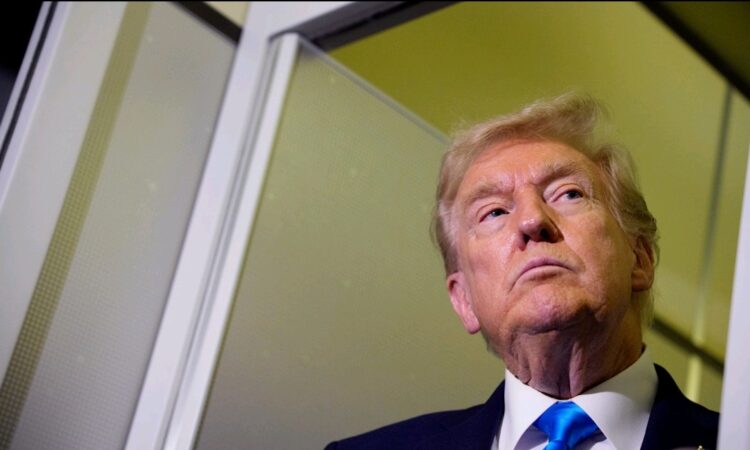
When Donald Trump went on a strange, emotional speech about the mental test he said he passed, it ended up doing the opposite of what he wanted. Instead of proving that he’s mentally strong and capable, his words made him sound confused, defensive, and out of control. He started bragging about his results, turning the moment into another opportunity to attack others this time comparing himself to two Democratic politicians who are both women of color.
His comments were not only inappropriate but also revealed a deep pattern of racism that he has shown many times before. By doing this, he made it clear how comfortable he is using race and gender as weapons to belittle people who disagree with him. What was supposed to be a moment to show his intelligence became an example of his growing instability, his hostility toward nonwhite people, and his disregard for the dignity of his office.
Many people saw this rant as another sign that Trump’s mental state might be slipping. Instead of focusing on the work of leading the country, he seemed obsessed with defending his own image.
His public behavior has become more erratic full of anger, denial, and confusion. The problem is not just that he says strange things, but that his mental decline has real consequences for millions of people. Every time he lashes out, spreads false claims, or makes impulsive decisions, people’s lives are affected from families facing deportation to communities suffering from his policies on health care, housing, and civil rights.
Meredith Shiner, an editor and journalist at The New Republic, has been analyzing how the media talks about Trump and believes they often fail to connect the dots between his mental instability and the real damage it causes. She argues that reporters spend too much time covering his words like entertainment instead of treating them as evidence of dangerous leadership.
Shiner points out that while the press reports on his latest outburst, they rarely show how those outbursts lead to suffering for ordinary people. Living in Chicago, she’s seen firsthand how his administration’s decisions hurt communities from policies that increase poverty and violence to the government’s neglect during crises like the pandemic.
She believes the media should go deeper by revealing who is actually making the important decisions behind Trump’s public chaos. When the president seems distracted or unfit, power often shifts quietly to advisors and officials who may have their own extreme agendas. By ignoring this dynamic, the press lets the public miss the full picture of how the government is functioning — or failing to function. Shiner also thinks Democrats need to do a better job showing the human cost of all this, putting real faces and real stories in front of the public to make it clear how damaging Trump’s leadership has been.
In the end, Trump’s rant about his mental test wasn’t just another strange moment. It was a glimpse into how deeply unprepared and unfit he may be to lead, and how his instability is not just a personal issue — it’s a national one. The media, politicians, and the public all have a responsibility to see that connection clearly, because the consequences of ignoring it are being felt by real people every day.




